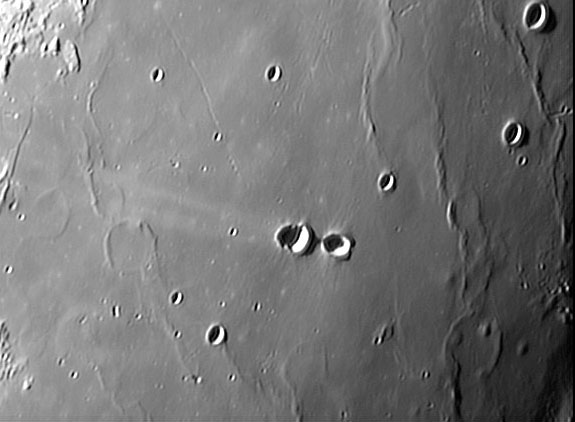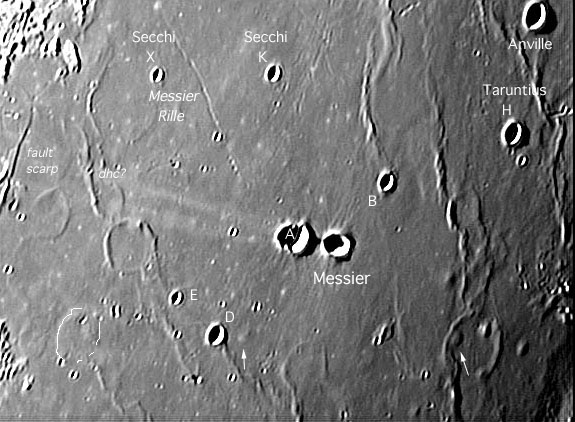Difference between revisions of "October 11, 2004"
| (7 intermediate revisions by the same user not shown) | |||
| Line 1: | Line 1: | ||
__NOTOC__ | __NOTOC__ | ||
=Fertility Central= | =Fertility Central= | ||
| + | <!-- Start of content --> | ||
<table width="85%" border="0" align="center" cellpadding="6" cellspacing="2"> | <table width="85%" border="0" align="center" cellpadding="6" cellspacing="2"> | ||
<tr> | <tr> | ||
| Line 7: | Line 8: | ||
<table width="85%" border="0" align="center" cellpadding="6" cellspacing="2"> | <table width="85%" border="0" align="center" cellpadding="6" cellspacing="2"> | ||
<tr><td colspan="2" valign="top"><div align="center"> | <tr><td colspan="2" valign="top"><div align="center"> | ||
| − | + | <!-- Mouse style 1 --> | |
| − | + | {{HoverImage|LPOD-2004-10-11.jpeg|LPOD-2004-10-11b.jpeg}} | |
| − | |||
| − | |||
</div></td> | </div></td> | ||
</tr> | </tr> | ||
</table> | </table> | ||
<table width="80%" border="0" align="center" cellpadding="8"> | <table width="80%" border="0" align="center" cellpadding="8"> | ||
| − | <tr><td><div align="center" class="main_sm">Image Credit: Gerardo Sbarufatti</p> | + | <tr><td><div align="center" class="main_sm"><p>Image Credit: Gerardo Sbarufatti</p> |
</div></td> | </div></td> | ||
</tr> | </tr> | ||
| Line 24: | Line 23: | ||
<p align="left">Can you imagine an image of the central part of Mare Fecunditatis where [[May_20,_2004|Messier]] is not the most fascinating feature? Here is one! (But, yes, this fantastic image does show the rarely imaged N-S butterfly wing pattern of ejecta at Messier). Starting at the western edge (left side) the well-known Lubbock fault scarp casts a shahow (see mouseover). Both the scarp and the pits on the mare ridge to the east (dhc?) are dark near full Moon and are pyroclastic units. The rille Messier I and its continuing line of collapse pits (the rille continues as a lava tube) are nicely displayed. But what seems to be new - I can't find it on any previous images, NASA or amateur - are the delicate rilles just east and north of Secchi K. Notice that one rille/line of pits runs NW-SE, but the others are more N-S. This image is also full of beautiful ghost craters, consistent with estimates that the mare here is mostly less than 500 m thick. In a ghost crater near the southeast corner is a classic hemispheric dome with a summit pit; other hills nearby seem to be steeper and not obviously domes. A broad, swell-like, possible dome is visible in the southwest corner. This one image, covering an area poorly shown in spacecraft imagery, has revealed new features and demonstrated that every place on the Moon deserves high resolution, low sun imaging!</p> | <p align="left">Can you imagine an image of the central part of Mare Fecunditatis where [[May_20,_2004|Messier]] is not the most fascinating feature? Here is one! (But, yes, this fantastic image does show the rarely imaged N-S butterfly wing pattern of ejecta at Messier). Starting at the western edge (left side) the well-known Lubbock fault scarp casts a shahow (see mouseover). Both the scarp and the pits on the mare ridge to the east (dhc?) are dark near full Moon and are pyroclastic units. The rille Messier I and its continuing line of collapse pits (the rille continues as a lava tube) are nicely displayed. But what seems to be new - I can't find it on any previous images, NASA or amateur - are the delicate rilles just east and north of Secchi K. Notice that one rille/line of pits runs NW-SE, but the others are more N-S. This image is also full of beautiful ghost craters, consistent with estimates that the mare here is mostly less than 500 m thick. In a ghost crater near the southeast corner is a classic hemispheric dome with a summit pit; other hills nearby seem to be steeper and not obviously domes. A broad, swell-like, possible dome is visible in the southwest corner. This one image, covering an area poorly shown in spacecraft imagery, has revealed new features and demonstrated that every place on the Moon deserves high resolution, low sun imaging!</p> | ||
<blockquote> | <blockquote> | ||
| − | <p align="right">— [mailto:tychocrater@yahoo.com Chuck Wood]</blockquote> | + | <p align="right">— [mailto:tychocrater@yahoo.com Chuck Wood]</p></blockquote> |
<p align="left"><b>Technical Details:</b><br> | <p align="left"><b>Technical Details:</b><br> | ||
Oct 2, 2004, 00:07 UT. Celestron 8 + 2X barlow + 5,500 um IR cutout filter + Phillips Vesta Pro, 200 sec AVI at 10 fps, 400 best frames used. This remarkable image was taken by Gerardo Sbarufatti but I have not been able to contact him. Gerardo, I hope you will be pleased that your excellent image has been used on LPOD! Note that I have aggressively used the Photoshop "unsharp mask" filter to enhance subtle topo in the mouseover image. </p> | Oct 2, 2004, 00:07 UT. Celestron 8 + 2X barlow + 5,500 um IR cutout filter + Phillips Vesta Pro, 200 sec AVI at 10 fps, 400 best frames used. This remarkable image was taken by Gerardo Sbarufatti but I have not been able to contact him. Gerardo, I hope you will be pleased that your excellent image has been used on LPOD! Note that I have aggressively used the Photoshop "unsharp mask" filter to enhance subtle topo in the mouseover image. </p> | ||
<p><b>Related Links:</b><br> | <p><b>Related Links:</b><br> | ||
| − | [ | + | [http://www.lpi.usra.edu/research/lunar_orbiter/images/img/iv_060_h3.jpg Lunar Orbiter IV Image (Poor)] |
| − | <br>Rukl <i>Atlas of the Moon</i> Sheet 48 | + | <br>Rukl <i>Atlas of the Moon</i> Sheet 48</p> |
| − | <p | + | <p><b>Yesterday's LPOD:</b> [[October 10, 2004|Professor and Student]] </p> |
| + | <p><b>Tomorrow's LPOD:</b> [[October 12, 2004|Polar Dryness]] </p> | ||
</tr> | </tr> | ||
</table> | </table> | ||
| Line 41: | Line 41: | ||
<p align="center" class="main_titles"><b>Author & Editor:</b><br> | <p align="center" class="main_titles"><b>Author & Editor:</b><br> | ||
[mailto:tychocrater@yahoo.com Charles A. Wood]</p> | [mailto:tychocrater@yahoo.com Charles A. Wood]</p> | ||
| − | < | + | <!-- Cleanup of credits --> |
| − | + | <!-- Cleanup of credits --> | |
| − | < | + | <!-- Cleanup of credits --> |
| − | + | <!-- Cleanup of credits --> | |
| − | + | <!-- Cleanup of credits --> | |
| − | < | + | <!-- Cleanup of credits --> |
| − | < | + | <!-- Cleanup of credits --> |
| − | + | <!-- Cleanup of credits --> | |
| − | < | + | <!-- Cleanup of credits --> |
| − | + | <!-- Cleanup of credits --> | |
</td></tr> | </td></tr> | ||
</table> | </table> | ||
<p> </p> | <p> </p> | ||
| − | ---- | + | <!-- End of content --> |
| − | + | {{wiki/ArticleFooter}} | |
| − | |||
Latest revision as of 15:00, 15 March 2015
Fertility Central
Image Credit: Gerardo Sbarufatti |
|
Fertility Central Can you imagine an image of the central part of Mare Fecunditatis where Messier is not the most fascinating feature? Here is one! (But, yes, this fantastic image does show the rarely imaged N-S butterfly wing pattern of ejecta at Messier). Starting at the western edge (left side) the well-known Lubbock fault scarp casts a shahow (see mouseover). Both the scarp and the pits on the mare ridge to the east (dhc?) are dark near full Moon and are pyroclastic units. The rille Messier I and its continuing line of collapse pits (the rille continues as a lava tube) are nicely displayed. But what seems to be new - I can't find it on any previous images, NASA or amateur - are the delicate rilles just east and north of Secchi K. Notice that one rille/line of pits runs NW-SE, but the others are more N-S. This image is also full of beautiful ghost craters, consistent with estimates that the mare here is mostly less than 500 m thick. In a ghost crater near the southeast corner is a classic hemispheric dome with a summit pit; other hills nearby seem to be steeper and not obviously domes. A broad, swell-like, possible dome is visible in the southwest corner. This one image, covering an area poorly shown in spacecraft imagery, has revealed new features and demonstrated that every place on the Moon deserves high resolution, low sun imaging! Technical Details: Related Links: Yesterday's LPOD: Professor and Student Tomorrow's LPOD: Polar Dryness |
|
Author & Editor: |
COMMENTS?
Register, Log in, and join in the comments.





